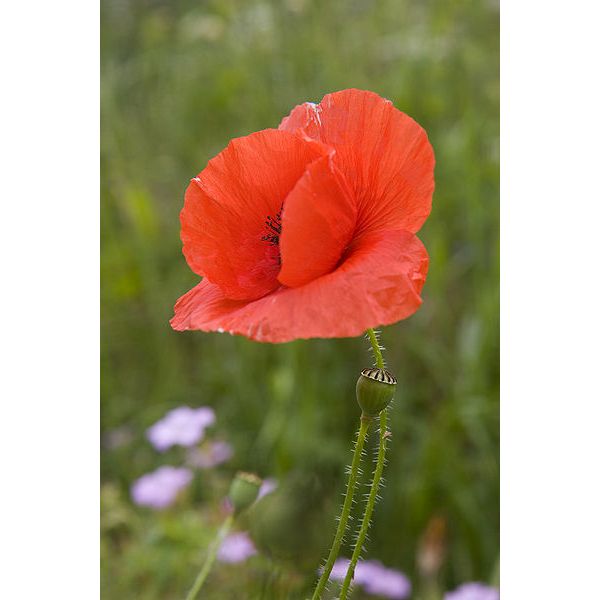Corn Poppy Seeds (Papaver Rhoeas)
Corn Poppy Seeds (Papaver Rhoeas)
The flowers of corn poppy have a long history of medicinal usage, especially for ailments in the elderly and children...

Delivery
All orders shipped with UPS Express.
Always free shipping for orders over US $250.
All orders are shipped with a UPS tracking number.
Returns
Items returned within 14 days of their original shipment date in same as new condition will be eligible for a full refund or store credit.
Refunds will be charged back to the original form of payment used for purchase.
Customer is responsible for shipping charges when making returns and shipping/handling fees of original purchase is non-refundable.
All sale items are final purchases.
Help
Give us a shout if you have any other questions and/or concerns.
Email: contact@domain.com
Phone: +1 (23) 456 789
Availability: Out of stock
SKU
Papaver Rhoeas
Papaver rhoeas, also known as common poppy, corn poppy, Flanders poppy or coquelicot, is an annual herb growing up to 60 cm tall, with white latex and slender roots.
In the northern hemisphere, it generally flowers in late spring, but if the weather is warm enough other flowers frequently appear at the beginning of autumn.
The brilliant scarlet flowers are large and showy. They are 7-10 cm in diameter most commonly with a black blob at the base of the petals.
Each flower bears four rounded, overlapping, papery petals. The petals are a source of red dye used in some medicines and wines. Dried petals are occasionally used to give colour to pot-pourris.
Papaver rhoeas seeds are used as a flavouring in cakes, bread, fruit salads, it imparts a very nice nutty flavour. The seeds are perfectly safe to eat. The leaves can be eaten raw or cooked. They are used like spinach or as a flavouring in soups and salads. The leaves should not be used after the flower buds have formed.
Hardiness zone : 4-8
| Label | Papaver rhoeas |
|---|---|
| Common name | common poppy, corn poppy, coquelicot |
| Family | Papaveraceae |
| Genus | Papaver |
| Species | Papaver rhoeas |
| Therapeutic uses | The flowers of corn poppy have a long history of medicinal usage, especially for ailments in the elderly and children. Chiefly employed as a mild pain reliever and as a treatment for irritable coughs, it also helps to reduce nervous over-activity. The flowers have been used in treating mild pain caused by earache, toothache and neuralgia. An infusion of the petals is traditionally taken for coughs, insomnia, poor digestion, nervous digestive disorders and minor painful conditions. The latex in the seedpods is narcotic and slightly sedative. It can be used in very small quantities, and under expert supervision, as a sleep-inducing drug. The leaves and seeds are tonic. They are useful in the treatment of low fevers. |
| Germination | Sow seeds directly where they are to grow in early spring or after the last snowfall, between March and May for an early summer showing. For late spring blooms, sow seeds in early autumn, between August and September. Poppies prefer to be grown in well-drained soil, in a sunny position. Dig over the ground and prepare a seed bed, adding well-rotted compost if necessary. Scatter the seeds by hand, or use a broadcast spreader to randomly sow the seeds over the prepared soil. Cover seeds lightly with a layer of fine soil. Firm the top soil gently and keep moist. Water corn poppies when the top of the soil feels dry. Saturate the root zone thoroughly, as shallow waterings promote a shallow root system. For best results, water by hand with a hose or use a drip system to keep the foliage as dry as possible. If you use a sprinkler, water early in the day so the foliage has time to dry before evening. Soggy soil and damp foliage place the plant at risk of rot and fungal diseases. Seedlings appear in 2 to 3 weeks. Thin seedlings, if desired, when they reach a height of 12cm (5in). Plants placed 15cm (6in) apart will face less competition and produce more pods and seeds. Alternatively, leave them to grow as small clumps, of 4 to 6 plants every 30cm (12in) or so. Continue watering regularly and keep them weed free. |
| Price View | Price Range |

